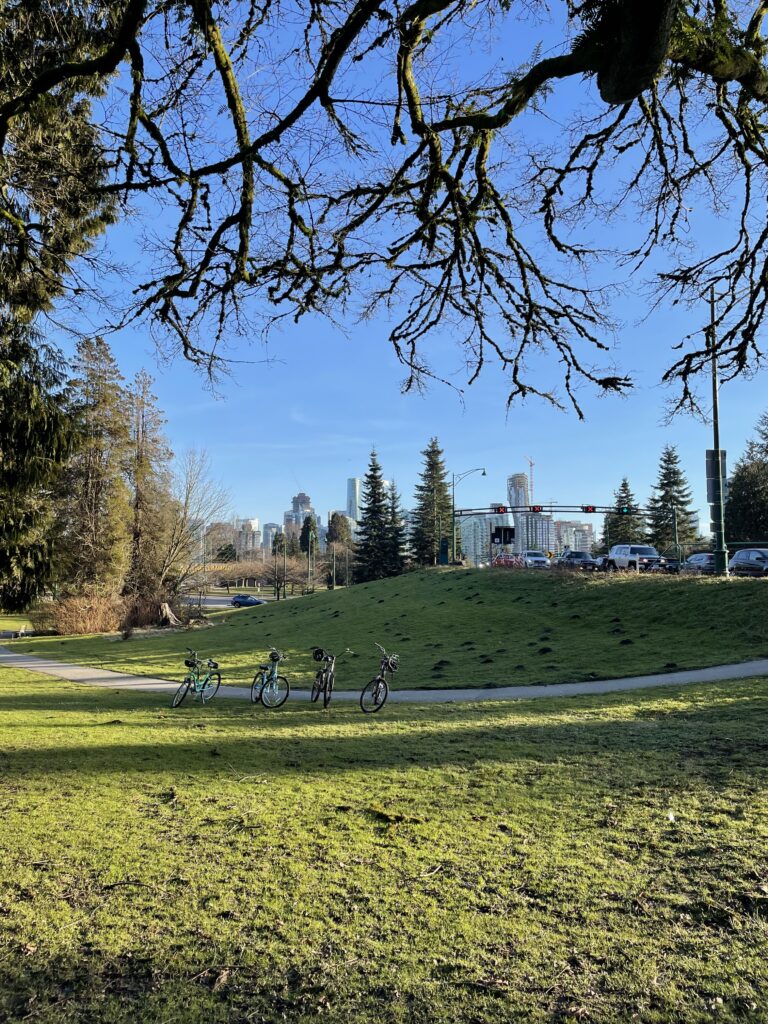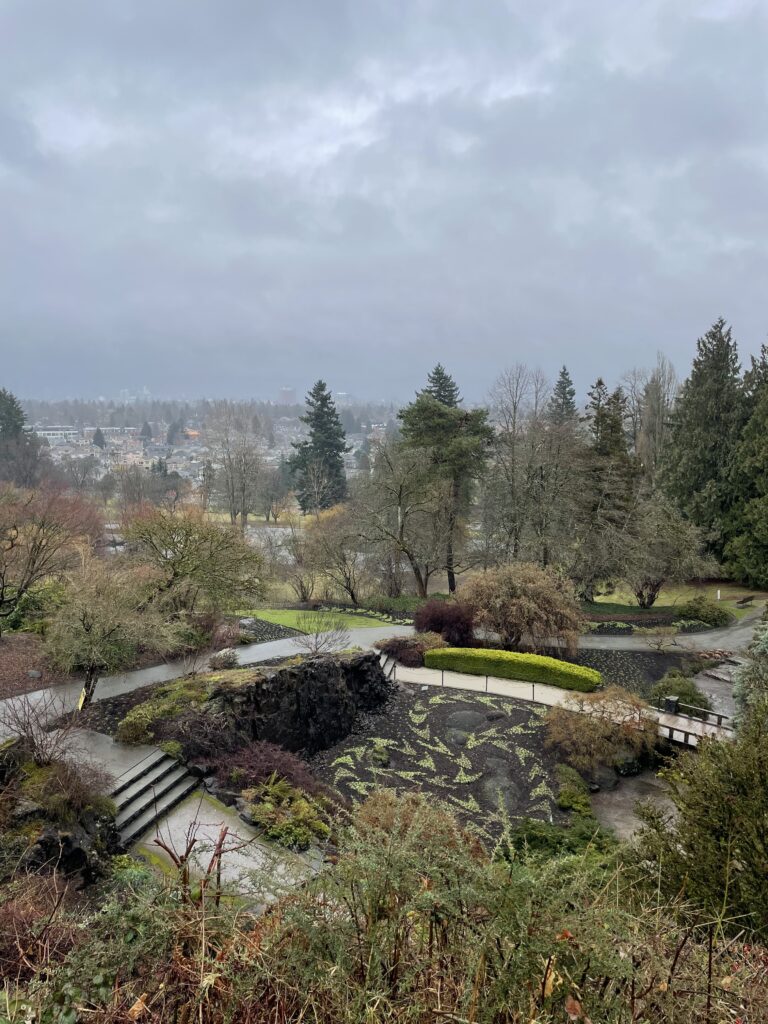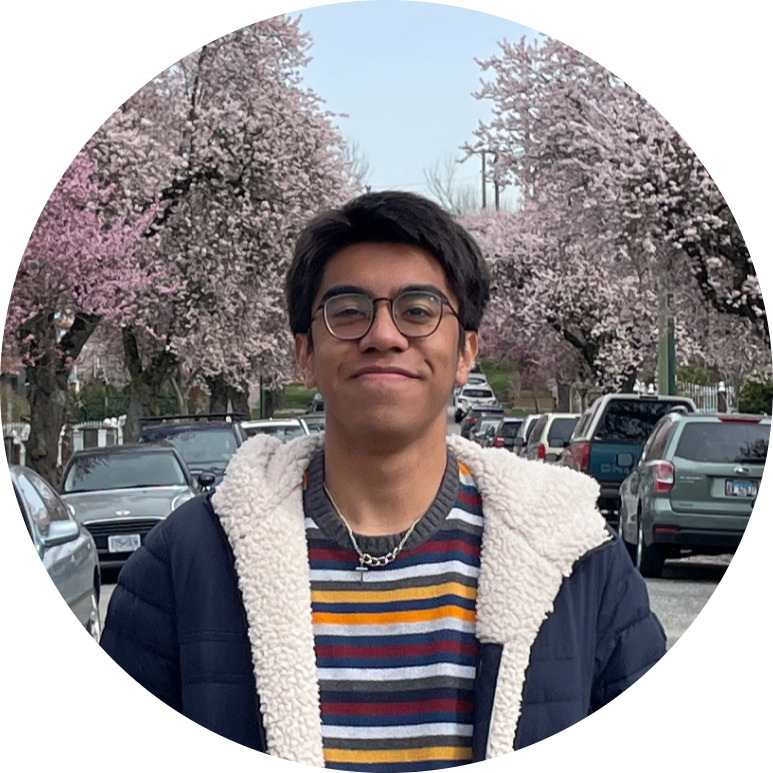Experience the beauty of Vancouver through Yonathan’s eyes as he takes you to natural and green spaces that are actually accessible to all. His little guided tour might make you wish for more green areas in buzzing cities!
A city close to perfection in my eyes.
That is how I would describe Vancouver during my short rose-tinted experience as an IISMA awardee at the University of British Columbia. The city’s concrete jungle was bustling, yet the stunning natural wonders were just one bus ride away. Vancouver was riddled with grandiose green spaces which contrastingly comes as a luxury in my city of residence, Jakarta. The gust of cold fresh wind and colourful vegetation in these spaces developed a feeling of tranquillity in me and soon, a newfound appreciation of the cruciality of green spaces in urban areas.
Being cooped up in our houses for weeks or months on end due to the soon-ending COVID-19 pandemic helped exemplify the importance of inhaling fresh air and basking in the morning sun, surrounded by greenery. Not only that, the increasingly hectic urban lifestyle I face as I grew older was temporarily paused amidst seeing the lushness of green spaces. Yet, a big chunk of people in urban areas still seldom utilize or struggle in accessing green spaces.

High-income areas of a city are more likely to possess green areas and are more involved in the decision-making process of green areas than lower-income areas. With a wide array of benefits, urban green spaces should become more accessible, especially taking into account the ongoing rapid global urbanization. The World Bank predicts about 7 of 10 people in the world will reside in urban settlements by 2050 but the lack of equity in urban greenery poses a missed opportunity for improving human health, combating air pollution, and much more to be discussed further in the following piece (World Bank, 2022).
Urban green spaces possess endless benefits for one’s physical, mental health, and intelligence alongside contributing to the sustainability of a city. Green spaces offer the increased likelihood of ‘green exercises’ such as walking, running, cycling, or even in some cases, light games of team sports if the space permits (Lee & Maheswaran, 2011). The connection between physical activity and mental health has been well recorded therefore green spaces also contribute by bettering one’s mental health through stress alleviation, increasing social interactions, and strengthening a sense of community (Kingsley & EcoHealth Ontario, 2019). Spending at least 2 hours in nature weekly has shown benefits toward health and well-being (White et al., 2019). Furthermore, research has proven that children aged 10-15 who live in greener areas have a higher IQ than those who do not, irrespective of economic background (Damian Carrington, 2020).
It does not stop at direct benefits for humans but also for the planet, greeneries like trees play a big role in cooling cities filled with concrete buildings which reduce energy costs by providing shade. Trees are also mother earth’s own effective carbon capture and storage machines. Trees play a big part in removing one of the main drivers of climate change, carbon dioxide, from the air. Moreover, vegetation work wonders in decreasing the possibility of flooding, an extremely common occurrence in many cities worldwide (Duinker et al., 2015).

With the myriad of advantages presented, what else is there to say? Let us keep building green spaces everywhere! Turns out, the distribution of urban green spaces is frequently lacking or far from equitable with only certain groups of people likely to have access based on affluence, educational background, and race/ethnicity. Urban green equity strives to eliminate this issue by ensuring fair access to and governance of urban vegetation regardless of differentiating factors such as socioeconomic status, race, culture, or age (Nesbitt et al., 2017).
Countless cities worldwide still fail to do so by having fewer green spaces and/or unmanaged urban green spaces in lower-income areas. Using Jakarta for example, a study suggests there is a positive correlation between unmanaged greenery in lower land value districts and the development of public green spaces lagging behind in contrast to the rapidly growing urban population (Hwang et al., 2020). Vancouver, despite being the motivating factor behind my interest in the issue, is also guilty of inequitable green spaces according to a recent study connecting access to urban green spaces with several social, economic, and demographic variables (Quinton et al., 2022). The city known as a melting pot of cultures displays an undeniably strong connection between income and the availability of green spaces.
My respected professor at UBC, Lorien Nesbitt, whose work has been mentioned a few times in the text above, has been actively looking for ways to create more equitable urban environments and offers a few solutions to do so. These solutions stem from two principal dimensions of urban green equity which are the spatial distribution of urban vegetation and recognition in the decision-making. The former relates to how urban green spaces can benefit the surrounding regions and people whereas the latter advocates the cruciality of including every single citizen in the decision-making of urban vegetation (Nesbitt et al., 2018).
First, financial help from governments and non-profit organizations will go a long way in supporting lower-income neighbourhoods. Tree stewardship and giveaway programs alongside increased participation and impactful engagement with relevant public stakeholders are another way to help. Renters should also participate by engaging with landlords in elucidating the importance of enriching greenery on public property. Finally, emphasis on implementing greenery during redevelopment by additionally taking into account public participation in the planning and implementation processes.

In conclusion, put on your shoes or if you were me, a pair of crocs, and start utilizing the green spaces around you especially if your daily life revolves around skyscrapers, gray concrete, and the blinding city lights. At the same time, take a look if your city has equitable access and involvement of citizens in constructing green spaces. Rapid urbanization, increasing temperatures, and volatile weather conditions induced by climate change call for increased attention to urban green equity. I hope this short piece can enlighten you in understanding the cruciality of having green spaces not only for yourself but for everyone regardless of one’s socioeconomic status, race, and age alongside contributing to the health of our planet.

Created by : Yonathan Philip Djari
Yonathan is an international relations graduate with a newfound interest in the environment, especially when it comes to climate change issues! Apart from the environment, he also really loves football and has to have a show to binge-watch at all times no matter how busy life gets.
References
Damian Carrington. (2020, August 24). Children raised in greener areas have higher IQ, study finds [News Agency]. The Guardian. https://www.theguardian.com/environment/2020/aug/24/children-raised-greener-areas-higher-iq-study
Duinker, P., Ordóñez, C., Steenberg, J., Miller, K., Toni, S., & Nitoslawski, S. (2015). Trees in Canadian Cities: Indispensable Life Form for Urban Sustainability. Sustainability, 7(6), 7379–7396. https://doi.org/10.3390/su7067379
Hwang, Y. H., Nasution, I. K., Amonkar, D., & Hahs, A. (2020). Urban Green Space Distribution Related to Land Values in Fast-Growing Megacities, Mumbai and Jakarta–Unexploited Opportunities to Increase Access to Greenery for the Poor. Sustainability, 12(12), 4982. https://doi.org/10.3390/su12124982
Kingsley, M. & EcoHealth Ontario. (2019). Commentary—Climate change, health and green space co-benefits. Health Promotion and Chronic Disease Prevention in Canada, 39(4), 131–135. https://doi.org/10.24095/hpcdp.39.4.04
Lee, A. C. K., & Maheswaran, R. (2011). The health benefits of urban green spaces: A review of the evidence. Journal of Public Health, 33(2), 212–222. https://doi.org/10.1093/pubmed/fdq068
Nesbitt, L., Hotte, N., Barron, S., Cowan, J., & Sheppard, S. R. J. (2017). The social and economic value of cultural ecosystem services provided by urban forests in North America: A review and suggestions for future research. Urban Forestry & Urban Greening, 25, 103–111. https://doi.org/10.1016/j.ufug.2017.05.005
Nesbitt, L., Meitner, M. J., Sheppard, S. R. J., & Girling, C. (2018). The dimensions of urban green equity: A framework for analysis. Urban Forestry & Urban Greening, 34, 240–248. https://doi.org/10.1016/j.ufug.2018.07.009
Quinton, J., Nesbitt, L., & Czekajlo, A. (2022). Wealthy, educated, and… non-millennial? Variable patterns of distributional inequity in 31 Canadian cities. Landscape and Urban Planning, 227, 104535. https://doi.org/10.1016/j.landurbplan.2022.104535
White, M. P., Alcock, I., Grellier, J., Wheeler, B. W., Hartig, T., Warber, S. L., Bone, A., Depledge, M. H., & Fleming, L. E. (2019). Spending at least 120 minutes a week in nature is associated with good health and wellbeing. Scientific Reports, 9(1), 7730. https://doi.org/10.1038/s41598-019-44097-3
